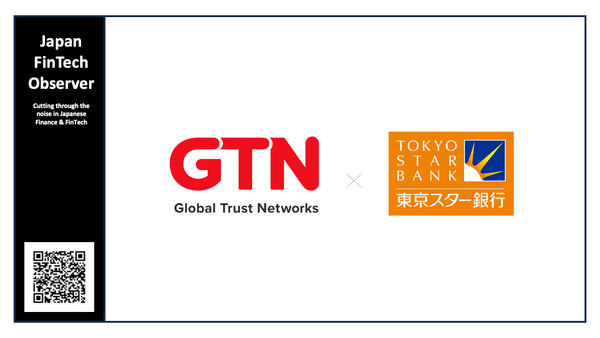JPX Chief on Corporate Governance Reform 2025

Hiromi Yamaji, Group Chief Executive Officer of the Japan Exchange Group (JPX), spoke at the Foreign Correspondents' Club of Japan on November 5, 2025, focusing on Japan's ongoing corporate governance reforms, the resultant market momentum, and JPX’s strategic initiatives for future growth.
Key Takeaways
- Sustainable Corporate Governance Reform is Delivering Tangible Results: Japan's governance transformation, rooted in a "comply or explain" principle-based approach, is now resulting in observable changes, including nearly universal independent board representation (99% of Prime-listed companies) and a major shift in management mindset. The 2023 TSE request for management to focus on the cost of capital and share price has seen 92% of Prime companies disclose plans for improvement, leading directly to a surge in corporate actions like M&A (record 4,700 deals last year) and increased dividends.
- Market Momentum is Driven by Macro Shifts and Investor Transformation: The Japanese market’s sustained rally is fueled by its emergence from decades of deflation (inflation above 2% for 3.5 years), record corporate profits (up 10x since the bubble burst), and geopolitical stability. This stability has attracted massive foreign capital implementing a "US plus one" diversification strategy. Concurrently, domestic retail investors, empowered by the expanded NISA tax savings account, have shifted 31 trillion yen into investment in the last 21 months, demonstrating huge room for continued growth.
- JPX is Expanding its Infrastructure in Derivatives and Clearing: Beyond cash equities, JPX is capitalizing on Japan's monetary policy normalization. This shift is causing explosive growth in the interest rate market: 10-year JGB futures trading volume is up 50% in two years, and short-term TONA futures are trading at 10 times last year’s level. Furthermore, JPX’s clearing house (JSCC) has seen a sevenfold increase in OTC interest rate swap clearing since 2021, and recently received a crucial exemption from the American CFTC to onboard US customers, solidifying its international role.
- A Proactive Strategy to Foster Startup Ecosystems in Asia: Recognizing the need for innovation, JPX is drastically revising its listing rules for 2030, raising the required market capitalization threshold from 4 billion yen within ten years to 10 billion yen within five years post-listing to ensure only scalable companies remain investable. JPX has also launched the TSE Asia Startup Hub, an incubator ecosystem designed to attract and support Asian startups (from seven regions including Indonesia and Singapore) to develop their business and eventually list in Japan via IPOs or Japan Depository Receipts (JDRs).
- Focus on Substance and Dialogue Over Mandatory Rules: JPX emphasizes that the reform is not about achieving 100% compliance percentages or mandating disclosure, but fostering constructive engagement between companies and investors. The exchange uses tools like "good" and "bad" case studies (to be updated in December) to inform the market and incentivize continuous voluntary improvement in capital efficiency and growth, ensuring the market remains the ultimate disciplinary mechanism.
Press Conference Details
I. Introduction and JPX Overview
Yamaji began by noting the contrast between the recent record-hot summer and the current strong, favorable climate of the Japanese market. He highlighted that since his last appearance at the FCCJ, the market has continued its strong trajectory, breaking several records, even amidst global uncertainties.
The Japan Exchange Group operates as a critical piece of financial infrastructure, encompassing several entities: the Tokyo Stock Exchange (TSE) for cash equities (which currently receives the most attention), the Osaka Exchange (OSE) for derivatives (including the NIKKEI 225 and JGB futures), a clearing house (JSCC), a data entity, and a self-regulatory body. Yamaji stressed that while the equity market is surging, the derivatives market, particularly interest rate and power futures, is rapidly growing in significance, positioning Japan as the world's fifth-largest electricity consumer needing sophisticated risk management tools.
II. Drivers of Sustained Market Momentum
Yamaji identified two primary, simultaneous factors driving the current momentum, emphasizing that this strength is not attributable to a single element.
1. Japan’s Economic Transformation
The first crucial factor is Japan’s long-anticipated exit from deflation. Headline inflation has consistently hit above 2% for the past three and a half years. This inflationary environment encourages corporate spending, leading to increasing capital expenditures focused on automation, digitalization, and labor-saving improvements necessary to address domestic labor shortages.
The results are visible in corporate performance: Japanese companies have set record highs in net profit for four consecutive years. Over the 25 years since the bubble burst, company profit has surged tenfold. Although global trade uncertainties, such as new US tariffs, pose undeniable risks, overall balance sheets show substantial improvement, and economic growth is projected.
2. Geopolitical Context and the US Plus One Strategy
The second major factor is Japan’s unique stability amidst rising global geopolitical tensions, especially between the US and China. Following the announcement of new US tariffs, global investor sentiment began to shift away from US-centric portfolios.
Investors are now seeking diversification, leading to the adoption of a "US plus one" strategy. While China remains important, Japan has emerged as a preferred alternative investment destination in Asia due to its market size, abundant liquidity, relative stability, and adherence to the rule of law.
III. Transformation of the Investor Base
Yamaji dismissed misconceptions about passive domestic Japanese investors, detailing the profound transformation occurring among both institutional and retail players.
Domestic Investors: The NISA Effect
Japanese institutional investors have significantly increased their commitment to stewardship and engagement, evidenced by greater transparency in their voting policies.
Most strikingly, the domestic retail investor base has grown substantially, primarily driven by the expansion of the Nippon Individual Tax Savings Account (NISA). Since its expansion 21 months ago, NISA has attracted 31 trillion yen in investment. In the 11 years since NISA’s introduction in 2014, over 65 trillion yen has been invested, meaning nearly 50% of the total investment occurred in just the last 21 months.
Furthermore, 48.8% of NISA accounts and 44.6% of investment capital are held by individuals in their 40s and younger, indicating that the younger generation is rapidly adopting investment habits. Despite this rapid growth, the potential remains massive: household financial assets still hold 1,126 trillion yen in bank deposits. The 31 trillion yen shifted through the new NISA represents only a 2.6% shift from savings to investment, suggesting huge room for future expansion.
Foreign Investors: Net Buying Records
The necessity of portfolio diversification (the US+1 strategy) has brought significant foreign capital back to Japan. After a major holiday, foreign investors were net purchasers of Japanese equity for 17 consecutive weeks, totaling 6.1 trillion yen—a historical record surpassed only by the 18-week period during the early Abenomics era.
More recently, following the election of Prime Minister Takayichi, foreign investors recorded a net purchase of 1.2 trillion yen in just one week, a 12-year record high. Since the beginning of the year, foreign investors have accumulated 5.7 trillion yen in net purchases.
IV. The Corporate Governance Reform Revolution
The steady, voluntary progress of corporate governance reform is cited as a major factor sustaining market momentum. Yamaji traced the roots of the reform back to 1999, gaining significant momentum in 2013 under former Prime Minister Abe.
The Comply-or-Explain Model
The Japanese reform has deliberately employed a principle-based, soft law approach using the "comply or explain" model, rather than mandatory rules. This encourages voluntary effort, which, while slower, results in sustainable progress. The core aim is to spur companies to take bold business risks under the supervision of strong, independent boards, ultimately allowing the market and investors to serve as the best disciplinary mechanism.
The physical changes are now undeniable: in 2014, only 6.4% of companies in the old first section had a board with more than one-third independent members; today, 99% of Prime-listed companies meet or exceed the one-third independent director threshold.
Focus on Cost of Capital and Share Price
The TSE introduced new market segments (Prime, Standard, Growth) in April 2022. The most significant action came in March 2023, when the TSE requested management of Prime and Standard companies to become conscious of their cost of capital and share price. Companies were asked to analyze their current capital efficiency at the board level, formulate improvement plans, and update these plans through constructive engagement with investors.
The response has been overwhelmingly positive:
- Prime Companies: 92% have responded by disclosing plans to improve capital efficiency. 72% of these have already updated their plans.
- Standard Companies: 49% have disclosed their plans.
Yamaji noted that the goal is not a mandatory 100% disclosure rate, but rather achieving mid- to long-term corporate value improvement.
Concrete Results of Mindset Change
The evolving mindset is generating increased corporate actions:
- M&A Activity: M&A transactions reached a record high of 4,700 deals last year, continuing strongly into this year with close to 3,700 transactions by the end of September. One out of every seven listed companies has participated in at least one M&A deal.
- Takeover Bids (TOB): TOBs are also increasing (110 announced this year, up from 100 last year). This demonstrates active business reorganization, with sellers streamlining portfolios and buyers seeking growth opportunities.
JPX’s Role Moving Forward
JPX’s role is that of a platform provider. The reform effort is committed to continuing, focusing on substance—meaningful board discussions and management’s willingness to learn from the market—rather than mandating disclosure rules for capital structure, which must remain unique to each sector and company.
JPX supports this process by providing tools, notably through case studies. The 55 "good case studies" and 10 "bad case studies" (misalignments) have been highly received, with the stock prices of the "good cases" performing strongly. These case studies will be updated in early December, focusing on how "not-so-good" companies successfully transformed.
V. Strategic Initiatives for Future Growth
Yamaji outlined several other key areas where JPX is focusing its efforts.
1. Fostering Startups and Asian IPOs
Startups are essential for driving innovation. Historically, many Japanese startups listed small and remained uninvestable by institutional investors, leading to a negative spiral.
To combat this, the TSE plans to revise listing rules after 2030, raising the required market capitalization drastically: companies must achieve 10 billion yen within five years of listing, up from the current 4 billion yen within 10 years.
To utilize the Japanese market as an "incubator for Asian startups," JPX launched the TSE Asia Startup Hub. This ecosystem of 56 partners (banks, VCs, law firms) supports 20 Asian startups from seven regions, including Indonesia. The goal is not solely listing, but helping these companies develop their business in Japan. While the IPO process is lengthy, the first IPOs from this group are expected within a couple of years. For companies whose home government mandates a dual listing, JPX offers Japan Depository Receipts (JDRs).
2. Explosive Growth in Derivatives and Clearing
Monetary policy normalization is providing new opportunities, making the interest rate market highly attractive.
- JGB Futures: The benchmark 10-year JGB futures trading volume is up 50% in two years. The 20-year JGB futures recently hit their highest open interest since 2014, signaling activity in longer-term rates.
- Short-Term Rates: TONA futures (short-term interest rate futures) are trading nearly 9,000 contracts per day, a tenfold increase from last year’s level. JPX aims to expand product variety across the yield curve, similar to the offerings of the US CME.
JSCC Clearing House: JPX’s clearing arm (JSCC) is also seeing record activity. Clearing volume for OTC Japanese Yen Interest Rate Swaps has increased sevenfold since 2021, now reaching 111 trillion yen in average daily clearing amount. Clearing for OTC Japanese Government Bonds (JGBs) is also surging, now averaging 250 trillion yen daily. JSCC holds an 80% market share in JGB repo clearing. Crucially, the American CFTC recently granted an exemption, allowing US customers to start clearing at JSCC once onboarding is complete.
3. Power and Future Technology
Japan’s expanding power futures market, critical for risk management in the liberalized power sector, has seen its open interest increase eightfold following the inclusion of Mitsubishi UFJ Bank as a clearing member. Looking ahead, JPX plans to list currency futures next year and is preparing for digital asset derivatives once regulatory frameworks allow.
In the realm of technology, Yamaji noted that Japan ranks high in AI preparedness. JPX is using generative AI to provide services, such as a Japanese company quick research engine, facilitating productivity improvements in the highly educated domestic workforce. The ETF market is also booming, with outstanding market capitalization doubling over the past five years to over 110 trillion yen.
VI. Dialogue and Q&A Highlights
In the discussion segment, Yamaji provided detailed responses on the challenges and future direction of the reform.
Explaining the Reform: Yamaji confirmed that through extensive outreach (six international trips this year alone), the message that "this time is different" has successfully reached global investors. Their current questions focus on sustainability, to which JPX maintains its commitment to continuing governance reform as the foundation of market confidence.
Disclosure Compliance and Compensation: Addressing concerns about superficial compliance in areas like advisor disclosure and incentive compensation, Yamaji reiterated the "comply or explain" philosophy. He argued that forcing disclosure is less valuable than demanding a good explanation for non-compliance. Regarding executive compensation, he provided statistics showing significant improvement among top Japanese companies: stock-based incentives now constitute 33% of total remuneration, exceeding the historical fixed pay portion and moving closer to European averages (UK is 45%, JPX CEO compensation is 45%).
Domestic Institutional Investors: Yamaji acknowledged the statistical absence of Japanese institutional investors in active trading (60% volume is foreign-led, often high-frequency traders), which limits domestic price discovery. He expressed hope that the expanded NISA base, which currently favors index and balanced funds, will eventually mature into more active domestic investment participation.
Delisting Procedures: On the issue of poor-performing or fraudulent companies (citing Nidec as an example of internal system failures), Yamaji explained that while accounting fraud results in immediate delisting, major companies facing issues like internal control failure are given a one-year period to adequately develop and implement improvements. Delisting decisions are taken with extreme care to avoid market chaos due to the large investor base.
ESG and Mobilizing Savings: Concerning the 50% of household assets still in bank deposits, Yamaji noted JPX's efforts to provide investment vehicles aligned with popular interest, such as climate change and infrastructure. JPX has developed an ESG Hub/Link accessible via its homepage, providing comprehensive ESG-related disclosure documents from all listed companies. Despite global setbacks regarding ESG in the US and Europe, Japan remains committed to promoting carbon neutrality and gender diversity as integral parts of corporate governance reform.
Activist Investors: Yamaji preferred the term "engagement funds" over "activists" due to the latter’s negative historical connotation in Japan. He stated that JPX is open to all investor types to maintain market liquidity. Currently, engagement funds own about 1% of the total market cap (similar to the US, lower than the UK). While the number of shareholder proposals received by companies is rising (399 proposals this year), only a few were passed at recent AGMs, indicating that while they force constructive dialogue and focus on capital efficiency, their proposals must be persuasive to the broader investor base to succeed.
Yamaji concluded by stating that Japan is at a pivotal moment and is committed to continuous reform, confident that global investors will continue to recognize and benefit from the positive structural changes.






